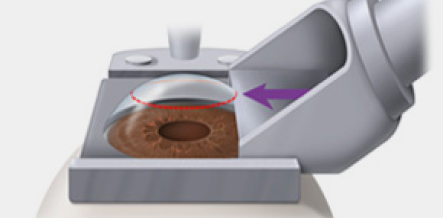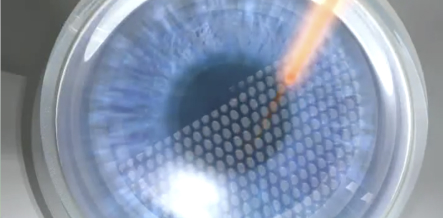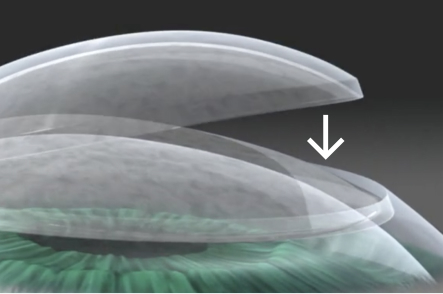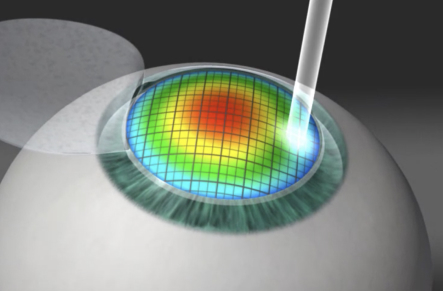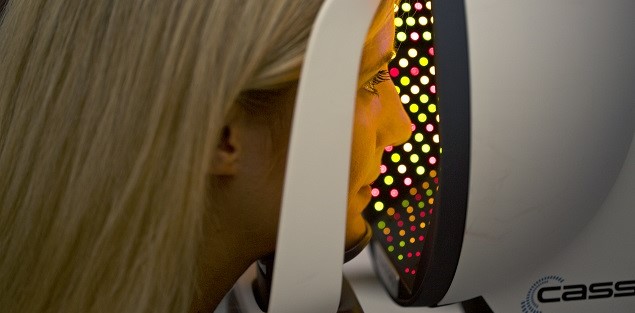Refractive surgery / Lasik Refractive Surgery
What does it consist of?
Refractive Laser Surgery: Femtolasik
The FemtoLasik technique is performed with cutting-edge femtosecond laser technology which has already been used for over 4.5 million procedures throughout the world, revolutionising laser eye surgery for correcting myopia, hyperopia and astigmatism.
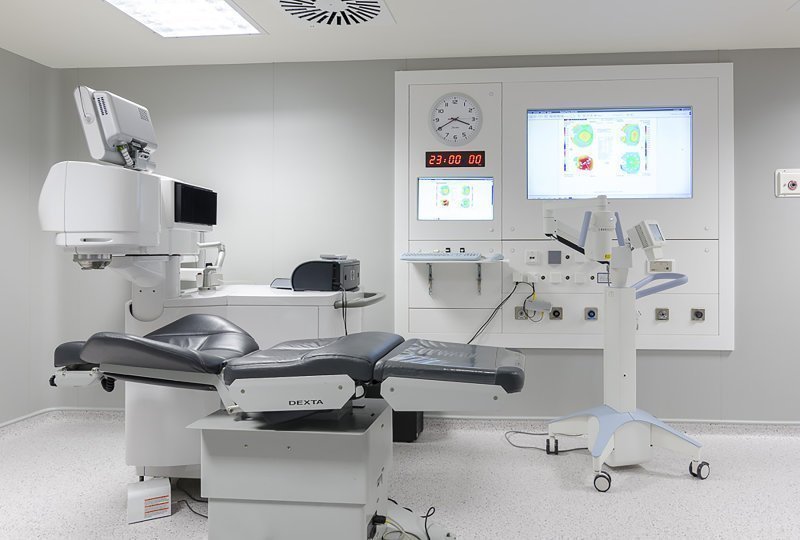
100% laser eye surgery: the key to its success
According to published studies, a large number of complications that occur during refractive surgery with Lasik technology arise due to the initial cut that is made to separate a thin layer of the cornea, to allow the treatment to then be carried out with laser.
This incision is still made with a blade, and although the number of corrected and aborted cases is low, the problem exists nonetheless. However, with this technology, the cornea is separated with a laser and not with a blade, which provides greater precision and increased safety in the procedure.
Differences between Lasik refractive surgery (blade) and 100% laser surgery
Surgery
Lasik (with blade)
→ only 50% of the surgery is performed with laser.
→ It can lead to more serious complications: Irregular astigmatism (intraepithelial growth), possible loss of the corneal flap, possible central hole that may affect quality of vision (buttonhole).
→ When making the incision, the surgeon cannot see what they are doing.
RECOMMENDED
Lasik refractive surgery
with femtosecond technology
→ 100% of the surgery is performed with laser.
→ Oftalvist was a pioneer of the technology when it was introduced in Spain in 2004.
→ Intraocular pressure increases less during the surgery, lower risk of dry eye.
→ The surgeon has a full view throughout the operation.
→ Faster recovery: stronger and more stable healing.
Not all Lasik techniques are the same or 100% laser!
Patients should find out if they are performed with a blade or with femtosecond laser technology.
What does refractive laser surgery with femtosecond technology involve?
Lasik technology, which is the most common method for correcting myopia, hyperopia and/or astigmatism, always involves two stages and takes around 10 minutes per eye:
First stage: the surgeon will lift a thin layer of corneal tissue similar to a lens, where they will later apply the Excimer laser. This lifting procedure is currently performed with a blade (mechanical microkeratome) or with femtosecond laser technology. At Oftalvist we perform this procedure using a femtosecond laser to achieve safer and more advanced surgery with perfect results.
Second stage: we correct the patient’s vision by reshaping the cornea using an Excimer laser. To finish the procedure, the layer of corneal tissue is put back in place and resealed without the need for sutures.
How do I know if I’m a suitable candidate for laser refractive surgery?
To be suitable as a candidate for laser myopia, hyperopia and/or astigmatism surgery, you will need to meet the following criteria:
✓ Suitable cornea thickness.
✓ At least 18 years old.
✓ Appropriate prescription.
✓ Healthy eyes.
General information
→ Dioptres: up to +5 for hyperopia/up to -8 for myopia/up to 5 for astigmatism.
→ Recovery time: two to three days.
→ Surgery stages: two stages. Femtosecond + Excimer. No blades used.
→ Flap: yes.
→ Unsuitable candidates: patients with corneal disorders where their cornea is very thin, patients with highly irregular astigmatism, patients with unoperated cataracts, patients with untreated glaucoma, and pregnant women.
Things to bear in mind on the day of your eye surgery:
→ On the day of the surgery you will need to bring someone to the clinic with you and wear comfortable clothing. You can eat before the surgery. You should avoid wearing makeup or strong perfume.
→ The surgery is always performed using topical anaesthetic, meaning that the surface of the eye is anaesthetised with eye drops. This removes any discomfort that may arise during surgery, while also allowing full collaboration during the operation, which is necessary for ensuring correct centration for the laser procedure. The patient is given an oral anxiolytic a few minutes before the procedure to help keep them calm.
→ The patient lies back on the laser bed and a special spacer is fitted to keep their eyes open throughout the procedure.
→ Post-operative care: After the surgery, the patient will remain in a room in the clinic with their eyes closed for approximately 15 minutes, after which an initial examination will be carried out. They will then be told what treatment to follow, and what they can and cannot do.
→ There may be some discomfort over the first few hours, their vision may still not be good, and they may experience a feeling of grittiness, eye watering, light sensitivity and, in some cases, moderate pain. As such, we recommend that for the first few hours after surgery the patient rest in a dimly lit room and, if possible, they should try to sleep.
→ The following day we will perform another examination. By this point visual acuity should be very good and there should be minimal discomfort. The fast recovery of vision should allow the patient to return to work very quickly.



